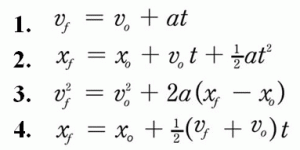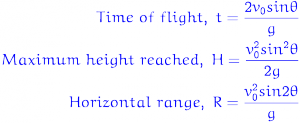- Introduction
The human body is an elastic and versatile model. It can move muscles individually or in a systematic way in an instant. For our project, we are interested in exploring realistic projectile motion and human acceleration as it pertains to the human body. While we often assume air resistance and spin to be negligible in Introductory Mechanics, as a way of simplifying our calculations, it is impossible to ignore their effects in competitive events like the long jump. The additional drag force caused by a single misplaced limb can lead to a loss of centimeters on a jump. This difference may indeed be negligible in the context of an Introductory Mechanics problem, but is everything to an athlete competing for medals and sponsorship. For our project, we want to explore the effects of proper body position on the traveled distance in the long jump, in addition to exploring the negative effects of improper position.
- Project Details
In order to do this, we believe we will need to devise a way of modeling the human body as a 3-dimensional object inside a larger 3-dimensional array representing space. If we find it necessary later on, we can make the body as low profile as possible by modeling it as a stick figure. We intend to impart initial conditions onto the object using the “Previous, Current, Next” template we have been using in our homework, to give the body an initial x and y velocity. The experimentation will occur in the middle of the jump, where we will change the position of various limbs of the body (possibly through matrix multiplication, as is done in computer animation), and compare the results on the final jump distance. Changing body position will both change the surface area profile of the body, changing the drag force, and change the body’s center of mass which may lead to spin in the face of wind. We will draw examples of proper and improper form from the literature produced by top track and field coaches so that our program will be grounded in reality and have some practical value.
- Motivation for Project
Track and Field and athletics in general have been major parts of both of our lives as, between the two of us, we have participated in basketball, volleyball, cross country, track and field, and swimming at a Varsity level. Also, both of us have considered careers in the Health & Fitness Industry in the past, and are still interested in ongoing developments in the field. We are both interested in the underlying mechanisms that go into making the simplest, and most human tasks, such as walking, running, and jumping, as efficient as possible. We also both competitive people and have spent years fussing over minute details to give us the smallest competitive advantage. We are excited to see what we can accomplish now with our improved knowledge of physics and the powerful software at our disposal.
References (will add more at a later time)
Giordano, Nicholas J., and Hisao Nakanishi. “Chapter 2: Realistic Projectile Motion.” Computational Physics. 2nd ed. Upper Saddle River, NJ: Pearson/Prentice Hall, 2006. Print.
Kinematic Equations

Projectile/Range Equations

Timeline (subject to change depending on our work efficiency):
Week 1: The setup. Establishing the arrays, the initial variables and conditions.
Week 2: Run simple trial with one-dimensional object in two-dimensional space with air resistance. Then second trial with a mass-less two dimensional object in 3-dimensional space.
Week 3: Two test trials with three-dimensional object in three-dimensional space, each with different body position.
Week 4: All trials complete, finalizing the written report and conclusion.


Use Latex to post equations.